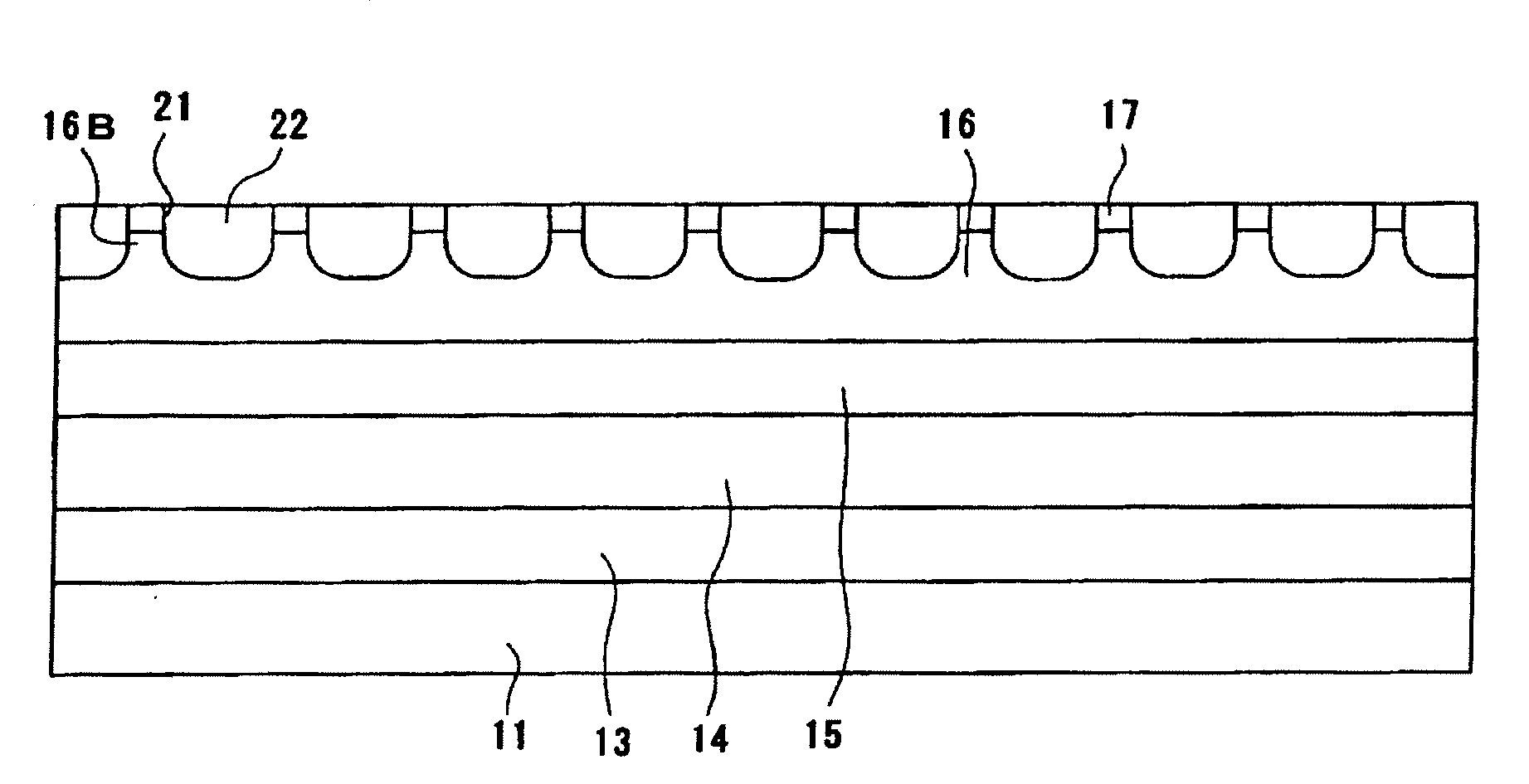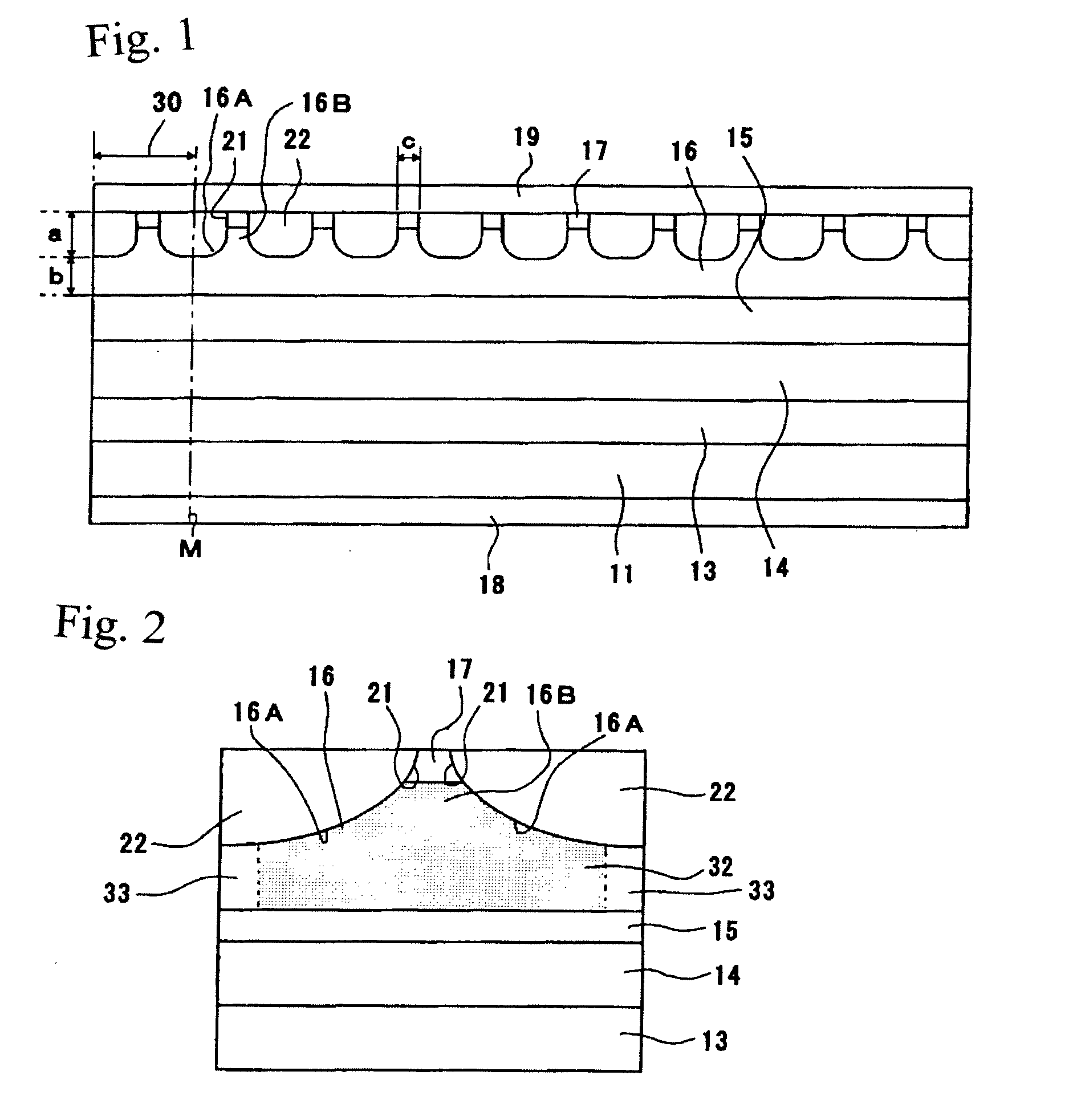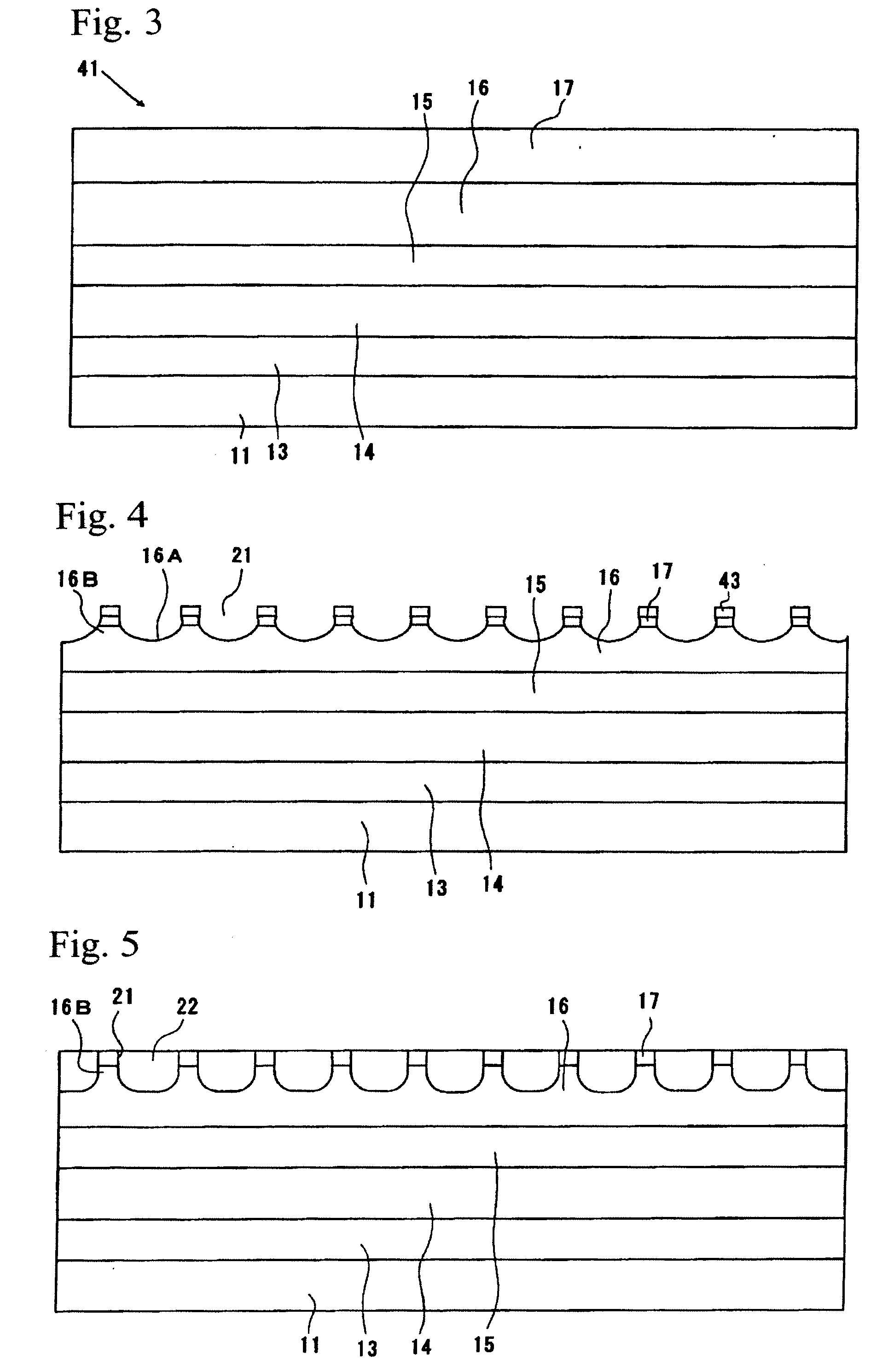Laser diode chip and its production method
a technology of laser diodes and diodes, applied in lasers, laser details, semiconductor lasers, etc., can solve the problems of not being able to use ld chips as light sources for lighting devices, and achieve the effects of low refraction index, high radiant efficiency, and low refraction index
- Summary
- Abstract
- Description
- Claims
- Application Information
AI Technical Summary
Benefits of technology
Problems solved by technology
Method used
Image
Examples
embodiment example 1
[0077]First, a laminate stack having the structure shown in FIG. 3 was fabricated by using the MOCVD method to stack a buffer layer of n-type GaAs semiconductor 0.6 μm thick, a first clad layer of n-type AlGaAs semiconductor 0.7 μm thick, an active layer of AlGaAs semiconductor 0.1 μm thick, a second clad layer of p-type AlGaAs 0.1 μm thick, and a cap layer of p-type GaAs semiconductor 0.2 μm thick, in that order, on a substrate of n-type GaAs semiconductor 300 μm thick.
[0078]Next, a protective film was formed by the CVD method on the full upper surface of the resultant laminate stack and a photoresist application film was formed on the full upper surface of the protective film. The application film was repeatedly exposed using masks with patterns corresponding to the etching protected regions (the regions other than the regions where current arctation layer concavities were to be formed), and the exposed portions were removed; the result had the application film patterned correspon...
embodiment examples 2 to 4
[0085]In embodiment example 1, LED chips in which the maximum depths of the current arctation layers were 0.2 μm, 0.4 μm, 0.8 μm, and 1.6 μm were produced in the same way as in embodiment example 1, except that the etching treatment periods were varied so that the maximum depths of the current arctation layers were 0.2 μm, 0.4 μm, 0.8 μm, and 1.6 μm.
[0086]The half-width values of the LED chips obtained were measured in the same way as in embodiment example 1. The results are shown in FIG. 6. These results, together with those of embodiment example 1, are shown in Table 1 and FIG. 6.
TABLE 1Embod-Embod-Embod-Embodimentimentimentimentexample 1example 2example 3example 4Maximum depth of0.20.40.81.6current arctation layer(μm)Half-width value (nm)2920124
PUM
 Login to View More
Login to View More Abstract
Description
Claims
Application Information
 Login to View More
Login to View More - R&D
- Intellectual Property
- Life Sciences
- Materials
- Tech Scout
- Unparalleled Data Quality
- Higher Quality Content
- 60% Fewer Hallucinations
Browse by: Latest US Patents, China's latest patents, Technical Efficacy Thesaurus, Application Domain, Technology Topic, Popular Technical Reports.
© 2025 PatSnap. All rights reserved.Legal|Privacy policy|Modern Slavery Act Transparency Statement|Sitemap|About US| Contact US: help@patsnap.com



